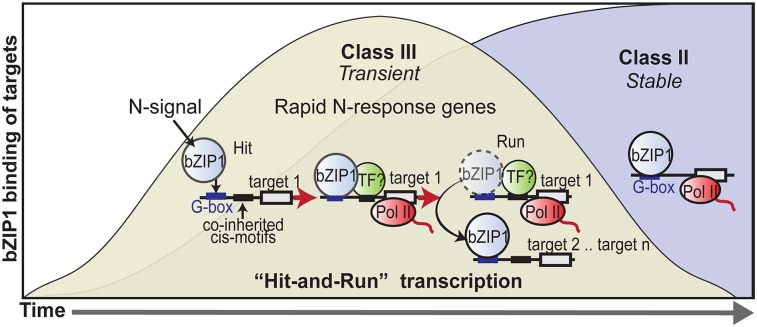Fig. 3.
A hit-and-run transcription model enables bZIP1 to rapidly and catalytically activate genes in response to an N signal. The transient mode-of-action for class III bZIP1 targets follows a classic model for hit-and-run transcription (21). In this model, transient interactions of bZIP1 with class III targets (the “hit”) lead to recruitment of the transcription machinery and possibly other TFs. Next, the transient nature of the bZIP1–target interaction (the “run”) enables bZIP1 to catalytically activate a large set of rapidly induced genes (e.g., target 2 … target n) biologically relevant to rapid transduction of the N signal.

